Developing a Successful Business Intelligence Strategy
Running a business in the modern world is full of constantly evolving and dynamic challenges. It can become overwhelming quickly. The maintenance of operations is a complex task that leaves little time for generating insights imperative for gaining a successful edge in competitive markets. But businesses of all sizes—SMEs especially—require perspectives from data that are accurate and actionable. At this point, the role of business intelligence (BI) is to make this data accessible, and it requires an intentional strategy.
In this article, we examine an understanding of business intelligence and layout directions for generating a business intelligence strategy that is relevant and accessible.
Understanding business intelligence (BI)
The core purpose of business intelligence is to leverage software and services to convert essential data points into actionable awareness. Tools used for BI provide access to data through analytical lenses such as reports, dashboards, charts, maps, and various other modalities. Users can render nuanced intelligence about the state of the business.
Business intelligence vs. business analytics
One of the principles of business intelligence is to offer data that provides a portrait of an organization’s current status. This state of the business might be today, this month, or another range of time. Still, it is an evaluation of the current standings. In this sense, business intelligence offers an illustration or explanation. In contrast, business analytics provide a prediction. Analytics primarily concern what a business should do for the future rather than where a business currently stands.
A guide to developing a business intelligence strategy
Business intelligence is meant to instill various capabilities, ranging from reporting and querying to complicated analysis and data mining. BI tools may include summaries, dashboards, graphs, charts, and maps that offer detailed illustrations. These tools and capacities are intended to provide fast and easily digestible portraits of the current state of an organization. To handle these many tools and capabilities, developing a strategy is a vital facet towards reaping the benefits of business intelligence.
We detail a few of the ways an organization can go about generating a sound business intelligence strategy.
1. Assess the present state
The first step to establishing a business intelligence strategy is to assemble a team that can accurately analyze and present the current status of the business’ data. With a dedicated team in place, assessing the current state of an organization involves considerations about the data currently collected and the technology being used to manage it. It is also vital to apprehend the organization’s structures and processes that mine and interpret the business’ data. In this stage, a BI team will want to identify the most valuable data and determine what data is less relevant (or irrelevant) to current operations.
2. Determine the relationship of data to performance
The second step a BI team can take is to discern the most important indicators for performance. In business terms, these are known as Key Performance Indicators (KPIs). Critical to KPIs is the ability to be measurable. A BI team must be able to point to objective numbers that relate to the business achieving its goals and implementing improvements. An example of a KPI might include the number of new contracts signed in a period. This same KPI may also be used to identify how many future contracts need to be signed to reach sales goals.
An essential aspect of identifying KPIs is to limit the overall number assessed and focus on the highest priorities. Additionally, these KPIs should be representative of the business as a whole. Choose KPIs from various factions of the company to offer a more holistic perspective of overall operations. It is important to note that BI strategies are not limited to the data of an IT department. They must involve all aspects of current procedures and inter-departmental goals.
3. Choose a solution and test it
Business intelligence strategies require the proper software and partners for implementation and maintenance. A core decision in this process is determining whether to use a cloud-based (remote) solution or an on-premise solution. The size of the business or the priority of security measures may impact this decision. Depending on how advanced the current resources for BI are within the organization, a company may also want to consider flexible and scalable options for future growth.
With the correct software or partners in place, a BI team can select a few KPIs to trail initially. Implementing the strategy can occur in stages. Each trial can assist in developing informational dashboards and summaries. The results can be submitted to various departments in the organization for feedback on the relevance and clarity of the data.
4. Perform regular reviews
Any effective business intelligence strategy must involve a review process. These review processes should assess lessons learned while documenting and identifying how valuable the data is to the organization. A review process may consider the user’s experience and the potential for change to the business’ KPIs from year to year.
Resources
Implementing and maintaining a business intelligence strategy can be complicated and require support. Specialists at Network Coverage can assist in this essential and ongoing process.
We provide BI services that include ERP management, data collection and reporting, dashboard development, performance reporting, and various other essential elements for your BI solutions.
For experienced advice and support on designing and implementing effective BI systems, you can explore expert technology solutions for business strategy by setting up a consultation with Network Coverage.

 IT consulting offers various [
IT consulting offers various [
 While many businesses have a dedicated IT department, it’s an excellent idea to employ an IT consultant as this will help your company improve network security. Professionals such as IT security consultants specialize in making your software, computer systems, and networks secure.
While many businesses have a dedicated IT department, it’s an excellent idea to employ an IT consultant as this will help your company improve network security. Professionals such as IT security consultants specialize in making your software, computer systems, and networks secure. If your business is working on a new project, it may be a good idea to outsource IT work. An IT security consultant will be able to recommend best practices that will help you create a secure network from the beginning. They can continue to advise your business on the best way to protect security over the long term to protect your software through its development life cycle.
If your business is working on a new project, it may be a good idea to outsource IT work. An IT security consultant will be able to recommend best practices that will help you create a secure network from the beginning. They can continue to advise your business on the best way to protect security over the long term to protect your software through its development life cycle.